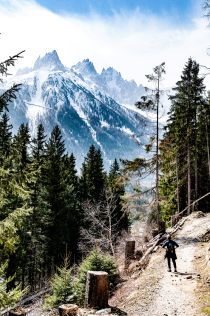
The great Himalayan national park, a UNESCO World Heritage Site and a biodiversity hotspot is located in Banjar sub-division of Kullu in the state of Himachal Pradesh, India. This National Park in the western part of the Himalayan Mountains is characterized by high alpine peaks, alpine meadows and riverine forests. It is part of the Himalaya biodiversity hotspot and includes twenty-five forest types.

Historical geography of the region
The national park and biodiversity hotspot lies within the ecologically distinct Western Himalayas at the junction between two of the world’s major biogeographic realms, the Palearctic and Indo-malayan Realms. Displaying biotic elements from both these realms. The evolution of this region is related to tectonic plate movements. Over 100 million years ago, the Indian sub-continent broke off from the large, southern landmass, Gondwanaland and moved north. It eventually slammed into the northern land mass, Laurasia, and formed the gigantic folded mountains of the Himalaya.
Due to this union of Gondwanaland and Asiatic landmasses, exchange of flora and fauna was possible and this ultimately led to the unique biogeographical features in the region.
Biodiversity of the Great Himalayan National Park
The park was established in 1984 and it spreads over an area of 1171 km2. It is a habitat to numerous floras and incorporates more than 375 fauna species, including approximately 31 mammals, 181 birds, 3 reptiles, 9 amphibians, 11 annelids, 17 mollusks and 127 insects. This ecologically unique region is protected under the strict guidelines of the Wildlife Protection Act of 1972.
The high elevation ecosystem of the Northwest Himalaya has common plant elements with the adjacent Western and Central Asiatic region. As a result of its 4,100 m elevation range the park has a diversity of zones with their representative flora and fauna, such as alpine, glacial, temperate, and subtropical forests.
Most of the Himalayan fauna has been protected under the high priority protection category of Schedule I of the Indian Wildlife (Protection) Act, 1972. The state government of Himachal Pradesh has banned hunting in the state for more than ten years.
The park has a wide variety of vegetation ranging from the lofty pines and spruces and the great, spreading horse chestnuts of the lower valleys, to the dense cushions and prostrate branches of the alpine herbs and junipers.
On this part of Western Himalayas, forests and alpine meadows can be seen in their original state. The subalpine zone is richest in species, followed by the alpine and upper temperate zones.
The Great Himalayan National Park Conservation Area shows very clearly the significance for biodiversity conservation. It is located within the globally significant “Western Himalayan Temperate Forests” eco-region. The National Park Conservation Area is home to 805 vascular plant species, 192 species of lichen, 12 species of liverworts and 25 species of mosses.
Trekking & Tourism prospects in the great Himalayan national park

The park has emerged as a popular trekking and ecotourism destination. The GHNP office at Sai Ropa issues permits for trekking. There are several popular trekking routes in the park, ranging from those that can be done in a day or two, to those that can take up from a week to ten days.
How to reach the Great Himalayan national park?
By air :
Fly to Kullu Manali Airport (Bhuntar) from Delhi, and then traveling by road to the park’s entrance.[ about 60 km from the park].
You need a permit to enter the park, which can be obtained from the park’s head office in Shamshi or zonal offices in Ropa and Shairopa. The park is only accessible by foot, and trekking is the only way to truly explore its wilderness.you can hire a guide.
By train :
Joginder Nagar is the nearest railhead, about 143 km away
By road :
Aut is the major stop on the Kullu-Manali highway, Aut is the gateway to the park and Parvati Valley. From Aut take a taxi or local bus to Banjar.
Written by Dr. sanjana.p. Souparnika
References
- https://whc.unesco.org/en/list/1406/
- https://en.wikipedia.org/wiki/Great_Himalayan_National_Park
- https://www.greathimalayannationalpark.org/
- Attribution https://www.freepik.com/search?format=search&last_filter=query&last_value=Himalayan+park&query=Himalayan+park
- https://www.freepik.com/free-photo/hiker-walking-hill-with-rocky-mountain_10292323.htm#fromView=search&page=1&position=17&uuid=0c9d61d9-16c6-4607-acde-38a5525bbf16&query=Himalayan++great+national+park
Leave a Reply